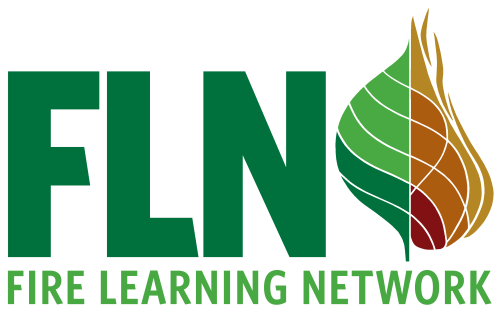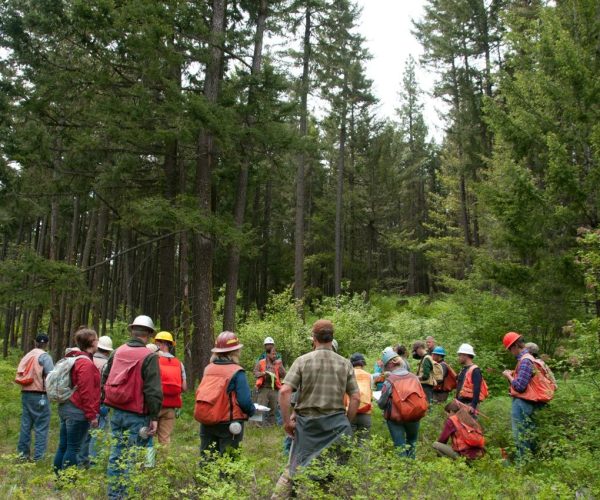

The Fire Learning Network (FLN) is made up of fire practitioners across the United States who are dedicated to building a world where beneficial fire can do its work on the landscape and harmful fire is less common and more effectively managed. The FLN connects these thought leaders to each other, and provides training, education, and funding to help them build the capacity and social capital needed to develop and maintain sustainable fire cultures. Our partnership has a track record of more than two decades of helping to restore our nation’s fire-adapted landscapes and make communities more resilient to fire. This success is reflected in the innovative programs that have grown from the FLN, including the other, now independent programs that make up the Fire Networks.
Our work begins in the landscape and works in towards communities, with the recognition that the landscape and the people on the landscape are equally important. We work to center the connections between fire, people, and place.
ABOUT
We must reimagine the way we live with fire. The Fire Learning Network (FLN) is uniquely positioned to leverage its membership, partners, and history to address the problems we face. The FLN has accomplished much over two decades, and we look forward to continuing the network’s role in innovating, adapting, and serving on the leading edge of a better future with fire.
The FLN embraces integrated fire management, an understanding that fire is both a conservation and a social issue. Restoring ecosystems, mitigating, and adapting to climate change, and reducing harmful impacts from wildfires can only be accomplished if the human relationships that impact these systems are also built, maintained, and healed.

PARTNERS
The FLN is coordinated nationally by staff from The Nature Conservancy. The regional networks and landscapes that make up the FLN engage more than 750 partners—from government and Tribal agencies at all levels, nonprofit organizations, and colleges and universities.

History
Following the difficult 2000 wildfire season and launch of the National Fire Plan, the FLN was established in 2002 under a cooperative agreement between The Nature Conservancy, USDA Forest Service and agencies of the Department of Interior. Initially the FLN was focused on facilitating locally led, collaborative restoration planning for fire-adapted landscapes and providing members with shared learning, support, and networking opportunities.
Early FLN collaboratives were led by TNC staff, but leadership has diversified over the years, with a range of local and national nonprofits now leading roughly half the local and regional partnerships. This has supported the FLN’s ability to meet local needs—and to serve as an incubator for ambitious new ideas. In various ways, Prescribed Fire Training Exchanges (TREX), the Fire Adapted Communities Learning Network (FAC Net), and the Indigenous Peoples Burning Network grew from the FLN. Today, the FLN and these “sister networks” make up the Fire Networks.
The FLN has also incubates and disseminates innovations between network members and to partners across the nation. Within the network, models like the as-needed mobile burn crews piloted in the Southern Blue Ridge have spread, supporting the need for a larger prescribed fire workforce. And an FLN-facilitated knowledge exchange between prescribed burn association (PBA) partners in the Great Plains FLNs and ranchers in California helped lay the groundwork for the rapid growth of PBAs in California—a trend now spreading across the West. The FLN has also informed development of federal programs—the Collaborative Forest Landscape Restoration Program (CFLRP) was in part modeled after the FLN’s collaborative governance practices, and the Joint Chiefs’ Landscape Restoration Partnership was inspired by the FLN’s successful pilot for cross-boundary project implementation.

